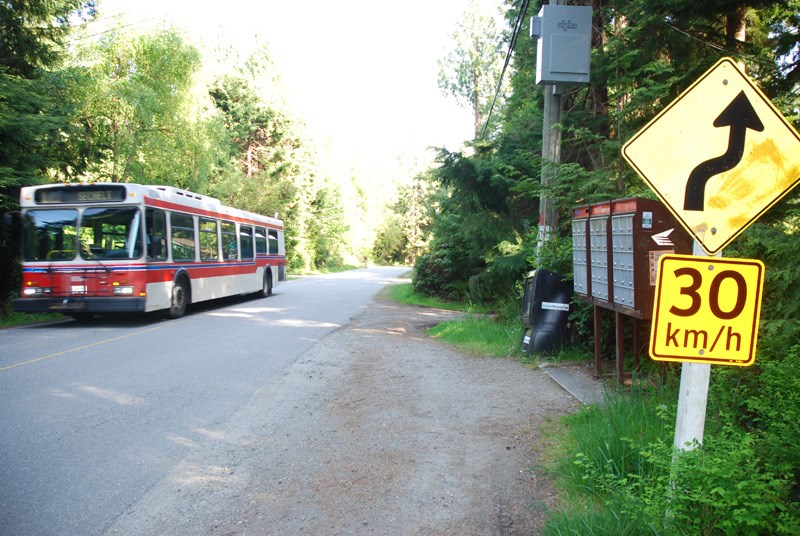Sunshine Coast Regional District (SCRD) directors have endorsed staff’s recommendation for a path of least resistance on Beach Avenue.
With the community divided over the best option, or need, for a walking path along the one-kilometre stretch between Cedar Grove and Roberts Creek roads, directors agreed on May 8 to move forward with widening and surfacing the most critical sections of the shoulder that are available, and leaving the rest of the scenic heritage route the way it is, at least for now.
Roberts Creek director Donna Shugar called the option — which also came in at the lowest cost, at $60,000 — a good one, as it addresses the road’s “extreme safety issues” and “provides us with an opportunity to test it out for a couple of years.”
The project would zero in on safety by improving two blind corners and their approaches and removing hedges that are encroaching in some areas, then building a shoulder so pedestrians could step safely from the road when vehicles pass. It also includes improved signage for the area.
Currently the shoulder varies in width from non-existent to three metres, forcing pedestrians to share the road with traffic and cyclists.
“Definitely this option would allow for the future,” parks planning coordinator Sam Adams told the community services committee. “You could add to it, you could pave it, make it continuous.”
The limited approach, he said, also preserves the area’s rural character and allows the road to remain unchanged where landowners object to a path.
During a public consultation and referral process in March, Adams said in his report, the Ministry of Transportation and Infrastructure and some residents expressed reservations about a proposed one-km gravel path along the south side of Beach Avenue — estimated to cost $246,000.
The option of a paved path for the entire stretch was deemed too costly at $320,000, posed similar logistical challenges as the gravel path option, would be less in keeping with rural character, and could also mix walkers and cyclists, he said.
A fourth option, estimated to cost $80,000, was identical to the selected one, except that the shoulder would be paved. That, however, would create inconsistent widths along the section of road, confusing cyclists and pedestrians, Adams said in his report.
While Adams’ recommendation was to surface the critical areas with gravel, directors advised staff to investigate other surfacing materials, and the committee’s recommendation directs staff to work with affected property owners and MOTI to develop the best design and surfacing solutions.
The scope of the project will depend on obtaining right-of-way agreements from three property owners for increased pedestrian space at the blind corners, and Adams said of two landowners contacted, one had agreed in principle and the other had indicated “a good possibility of completion.”
Some property owners will also need to trim or remove hedges from the right-of-way, but Adams said those contacted had, for the most part, been cooperative.
The committee’s motion will go to the May 22 board meeting for adoption.



